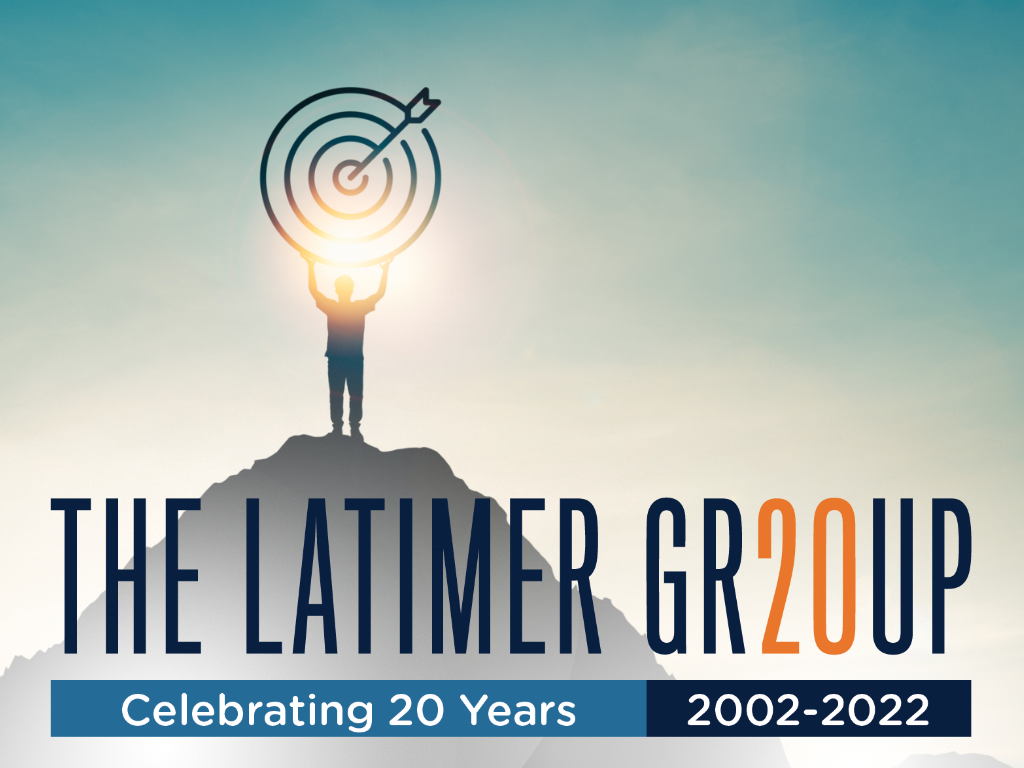This is the fourth in a series of short essays written by CEO and Founder Dean Brenner, to commemorate the 20th anniversary of The Latimer Group. In this series, Dean will share his reflections on, and learnings from, the last two decades.
Leadership coaching and training is a multi-billion-dollar industry, with no shortage of experts (or “experts”) to listen to and learn from. Anyone who wishes to try to fast track their own leadership development will have an almost inexhaustible supply of articles, books, podcasts and programs to choose from. And within all of that content, there are certainly some excellent offerings.
But there are two themes within this industry that are problematic, and that come up a lot: First, there is far too much opinion and content built around the myth that good leadership comes easily, “if you only follow these simple rules.” And second, that we can become good leaders by modeling our style after that of some other famous or successful leader.
But after twenty years of studying, coaching and living leadership, let me offer this warning: It isn’t (easy), and you shouldn’t (try to be like someone else).
I have consumed more than my fair share of leadership content over the last two decades, including plenty that falls outside of the leadership and training industry. (Historical biographies are a personal favorite.) In addition, I have had the honor and responsibility of coaching executives across a wide range of industries, while simultaneously living out the challenges of evolving from a single-person startup to a now fourteen-person organization.
If I have learned anything about leadership over the last two decades, it is this: Successful leadership is not an academic exercise that can be memorized and perfected after absorbing a book or a podcast, or taking a class. In fact, it can’t be perfected at all. No matter how hard we might try, no one gets it perfect all the time. Even the best leaders will make plenty of mistakes. And the more dynamic the situation (based on, for example, the size of organization, the spot in the company lifecycle, or the amount of chaos in the surrounding market), the harder it is to make consistently good decisions.
Leadership can be modeled, but only to a point. It must primarily be learned, and one’s own experience almost always informs the most reliable development path. Therefore, each leader must develop their own unique leadership style and fingerprints. We can certainly borrow elements from other successful leaders, but strict modeling alone will lead to, at best, inauthentic leadership. And at worst, it leads to full dysfunction.
At its core, leadership is about balancing a wide range of inputs, and then making the best, most well-informed decision we can. But unfortunately, these inputs are often in direct conflict with each other. The hardest decisions are the ones that end up on the leader’s desk, the “7-10” splits (a metaphor from the world of bowling, of all things), so to speak. If a decision is easy, it almost certainly can, should, and will be made somewhere else on the organizational chart.
I provide the same warning label to every leader I coach: You will have very few easy decisions. You will be constantly balancing competing needs and opinions, some of them polar opposites. And with almost every decision you make, someone will be disappointed; some will be loudly and vocally so. Know that. And the more senior your leadership role, the more true all of this becomes.
No book or coach can, or even should, tell you what kind of leader you should be. No one else can tell you how to make decisions. The most powerful tools in a leader’s toolbox are to have their own set of principles, and to have clarity on a few key questions:
- Where are you trying to take the organization, and how much are you willing to “spend” to get it there? This question will help you frame two things: first, how ambitious or extreme is your vision? Because the more ambitious or extreme, the harder it will be; and the more severe you will need to be in your choices. And second, how far are you willing to go to get it there? How much risk are you willing to take? Clarity here is essential.
- How many audiences do you have to manage, and which ones are the most important to you? Every leader has multiple audiences that need to be managed: clients/customers; employees; investors/shareholders; and partners/suppliers/vendors, among others. And with that, every leader needs to understand three things: first, how do you prioritize these audiences? Which are most important to your success? Second, what does each audience care about? What will be important to them? And third, what is the cost of ignoring any of your audiences, and are you willing to risk the inevitable blowback when you do?
- What kind of culture or community do you want to create for your organization, and what kind of people do you need to bring that to life? Are you trying to build an organization based on collaboration and creativity? Are you trying to build an organization based on high performance and relentless achievement? Or something else? These don’t have to be mutually exclusive… in other words, a highly collaborative organization does not have to mean low performance. But the personality types required to create a highly collaborative organization will certainly be very different than the ones required to build a performance-oriented, achievement-obsessed culture.
Your answers to these kinds of questions need to be authentic to you, and mesh with your own style. A healthy amount of self-awareness will be essential as well. Because if, for example, you try to create a culture that clashes with your own personal style, just because you learned about the virtues of such a culture, then you will be setting yourself up for an almost certain self-inflicted (and expensive) mistake.
It took me several years to figure out my answers to these questions. But once I did, my leadership, and in particular my communication internally and externally, became far more effective and powerful. And yet I remain on the journey. Because like within most organizations, our Latimer situation continues to be a highly dynamic one. Which means that no matter how comfortable I get with my own principles, and no matter how thoughtful and intentional I am in my decision making, mistakes and missteps will continue to happen. It is inevitable. I don’t get it right all the time. No one does. But I get it right more than I get it wrong, and I get it right more often than I used to. Those are the only two metrics that matter.
The same will be true for you. So read, listen and study all you can. That’s valuable. But balance all of that with your own vision, instincts, and style. Leadership is not a popularity contest. And no one gets a perfect score.
Twenty years has taught me that.
As we continue to share our #LatimerAt20 insights on a weekly basis, you can access the full anniversary series here.






Excellent advice, Dean – great points.
Thank you,
Mark